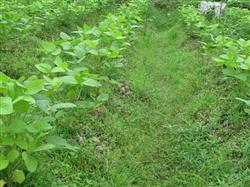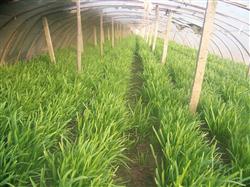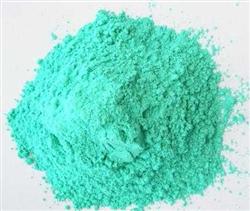How does growing soybeans prevent weeds?

How to control weeds by planting soybeans? Please introduce that the main weeds planted in soybean are Monocotyledon weeds, barnyardgrass, Echinochloa tenuifolia, Chenopodium and dogtail grass, and broadleaf weeds are amaranth, sausage, amaranth and abutilon. Summer soybean is usually sown in June, in the high temperature and rainy season, the occurrence of weeds is fierce, high density, strong growth, many species, easy to form grass famine. Generally, weeds begin to be unearthed 5 days after sowing, and the whole unearthed period lasts for about 60 days, which is extremely disadvantageous to the high yield of soybean. Therefore, it is very important to master the chemical weeding technology accurately. 1. Technical points of prevention and control in sowing period 1. For plots dominated by Gramineae weeds, within 3 days after sowing, 50% Acetochlor EC was sprayed on the soil surface with 100 ml of 50% Acetochlor EC or 150 ml of 33% dimeglin EC and 50 kg of water within 3 days after sowing. Under dry conditions, it is necessary to increase the amount of water or shallow mixed soil by 2 cm. two。 For plots dominated by broad-leaved weeds such as purslane and iron amaranth, 100 ml of 50% Acetochlor EC + 24% ethoxyfluoxane (diphenyl ether herbicide) EC was sprayed on the soil surface with 100 ml of 50% Acetochlor EC and 24% EC (diphenyl ether herbicide) before sowing. Soil organic matter content is low, sandy soil, low-lying land, water sufficient with low dose, and vice versa. At the same time, to remind everyone of the problem of drug damage, soybean seedlings are vulnerable to drug damage due to low temperature, high humidity, long-term accumulation of water in the field or excessive dosage, and the symptom is leaf shrinkage, but soybean can return to normal growth after three compound leaves and the temperature rises, which generally has no effect on yield. Second, the main technical points of prevention and control during the growing period. For plots dominated by Gramineae weeds, 50-70 ml of 5% quizalofop EC or 10.8% high-efficiency flopyrine EC 20-40 ml were sprayed on 30 kg of water at seedling stage. two。 In the plots dominated by broad-leaved weeds, when the weeds are basically in the seedling stage, 10% ethyl carboxyfluoxane EC is used to spray 30 ml of water per mu. 3. In a plot with a mixture of Gramineae and broad-leaved weeds, when the weeds were basically in the seedling stage, 7.5% Hekuoling EC (registered by the Ministry of Agriculture as fluorocarboxylaurin) EC 80 ml 100 ml, or 50 ml of 5% quinoline EC + 25% trifluorocarboxyl ether (diphenyl ether herbicide) water agent 50 ml, 30 kg of water was sprayed. In the above three cases, the specific dosage should be determined according to the grass and soil moisture, and the high dose should be used when the grass is big and the soil moisture is poor. It is reminded here that diphenyl ethers should be applied to 2 or 4 compound leaves of soybean, and it is easy to cause drug damage if applied too early or too late. Click to get more soybean planting techniques click to get more herbicide application techniques click to get more pesticide application techniques
- Prev

How to get rid of weeds when planting leek in greenhouse?
How to get rid of weeds when planting leek in greenhouse? Please introduce the method of planting leek in greenhouse by transplanting. After transplanting, pendimethalin, propranolol and Zhong Dingling can be selected for soil closure treatment. Apply 330 g / L EC 150 ml or 48% EC 200-250 ml per mu, add 50 grams of water.
- Next

How to use copper element fungicide?
How to use copper element fungicide? Please introduce the effect of copper fungicides. Copper fungicides can not only prevent and cure fungal diseases, but also prevent and cure bacterial diseases, protect and prevent wounds, sterilize and eliminate inflammation, and treat some skin diseases.
Related
- Fuxing push coffee new agricultural production and marketing class: lack of small-scale processing plants
- Jujube rice field leisure farm deep ploughing Yilan for five years to create a space for organic food and play
- Nongyu Farm-A trial of organic papaya for brave women with advanced technology
- Four points for attention in the prevention and control of diseases and insect pests of edible fungi
- How to add nutrient solution to Edible Fungi
- Is there any good way to control edible fungus mites?
- Open Inoculation Technology of Edible Fungi
- Is there any clever way to use fertilizer for edible fungus in winter?
- What agents are used to kill the pathogens of edible fungi in the mushroom shed?
- Rapid drying of Edible Fungi

